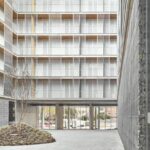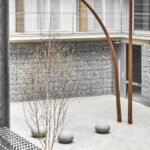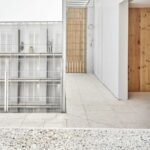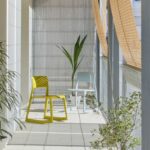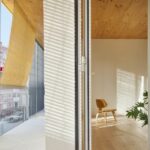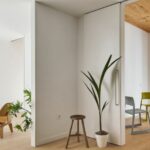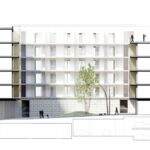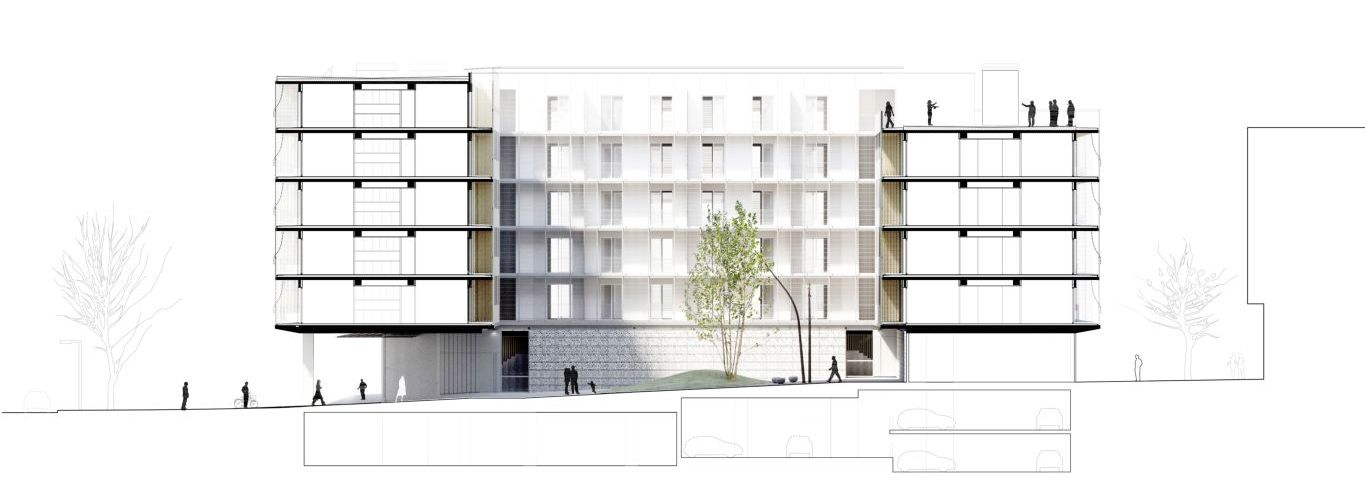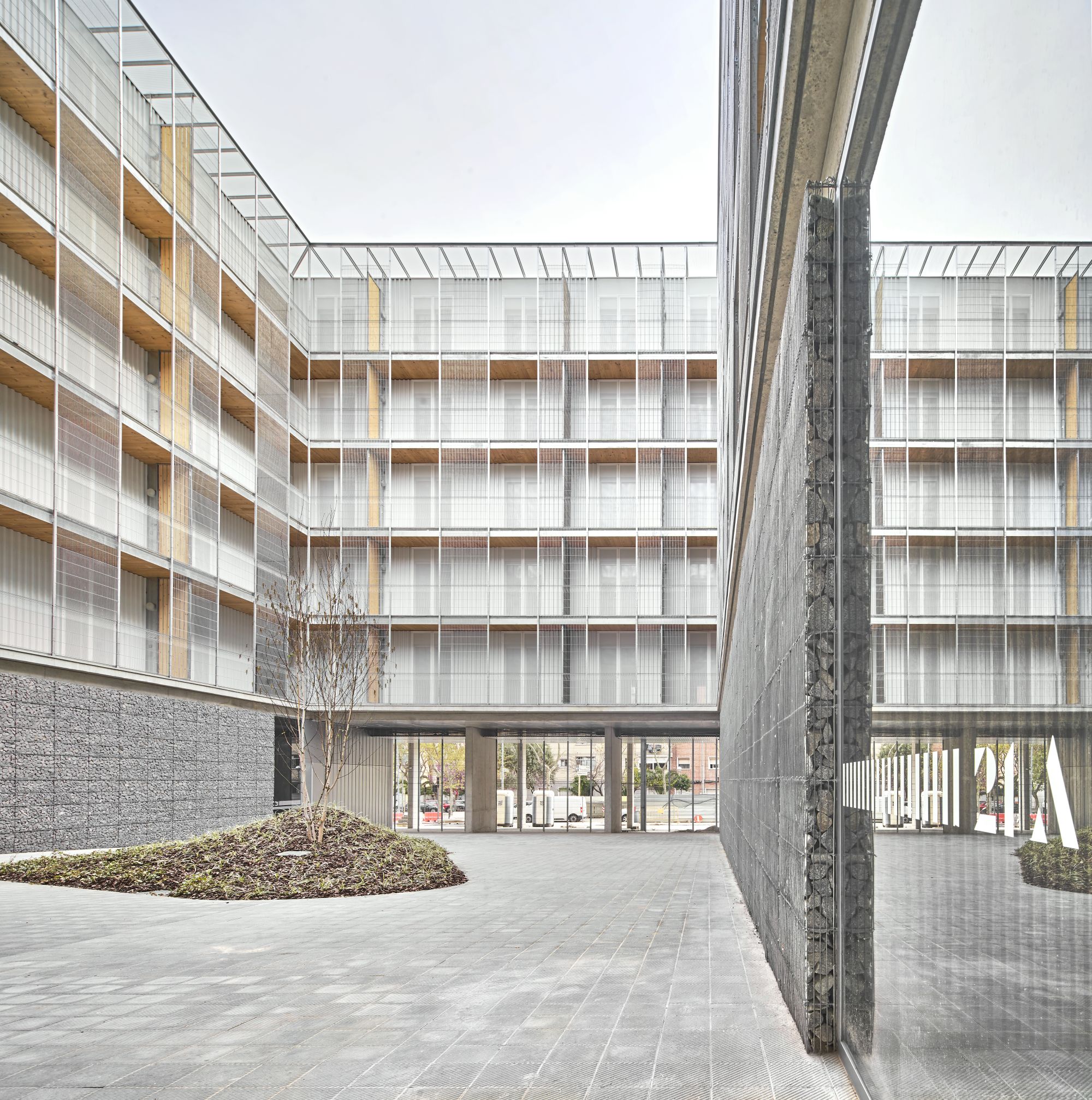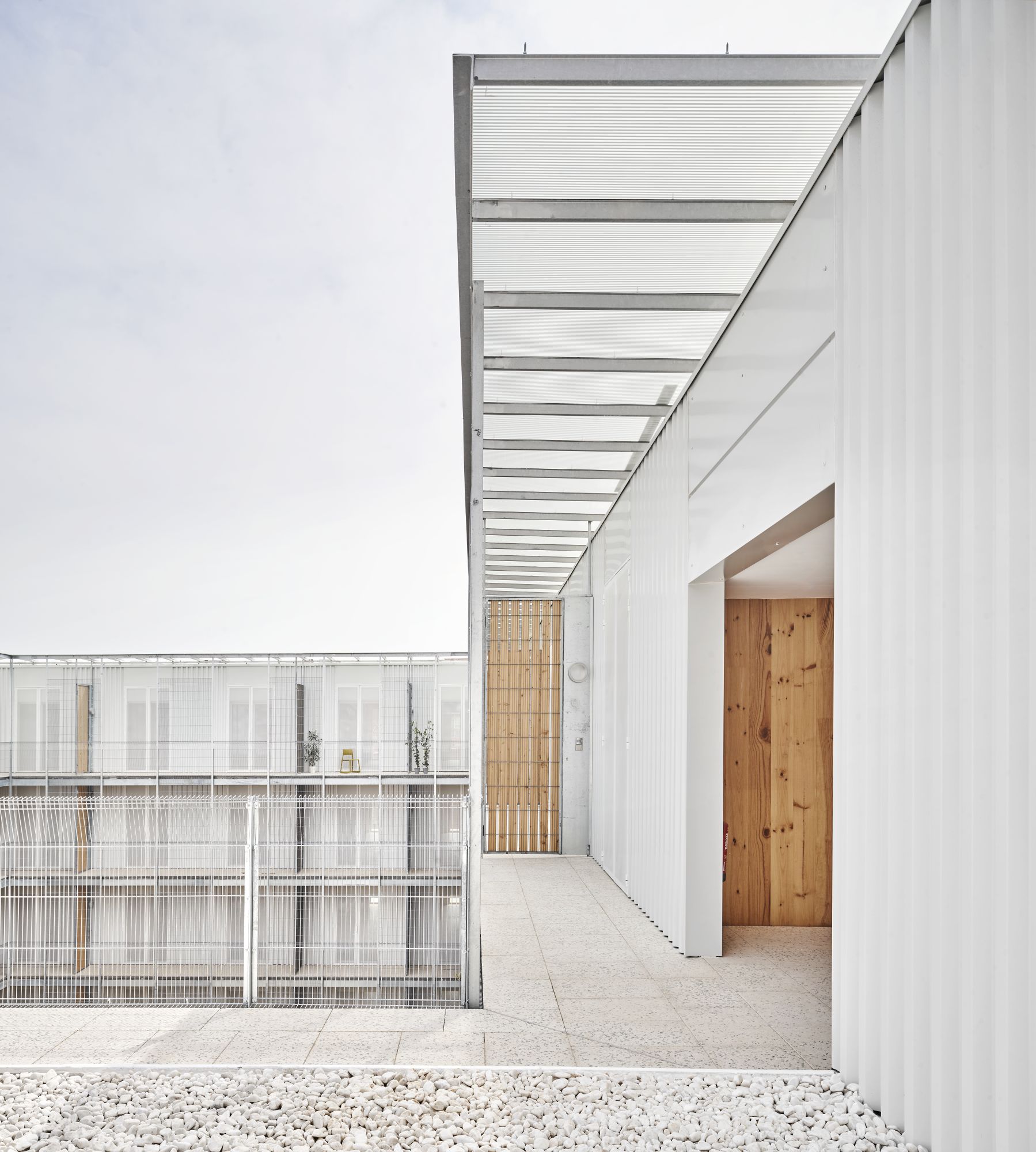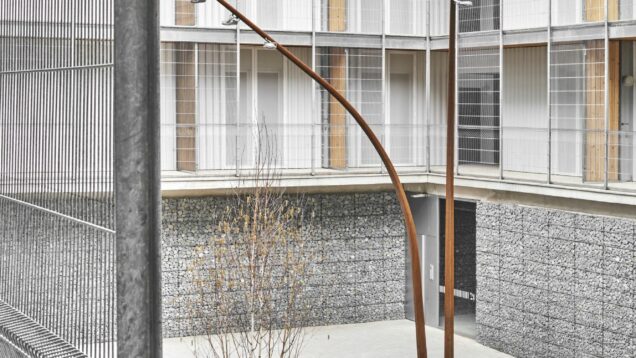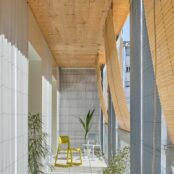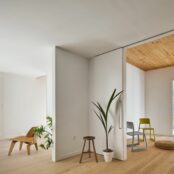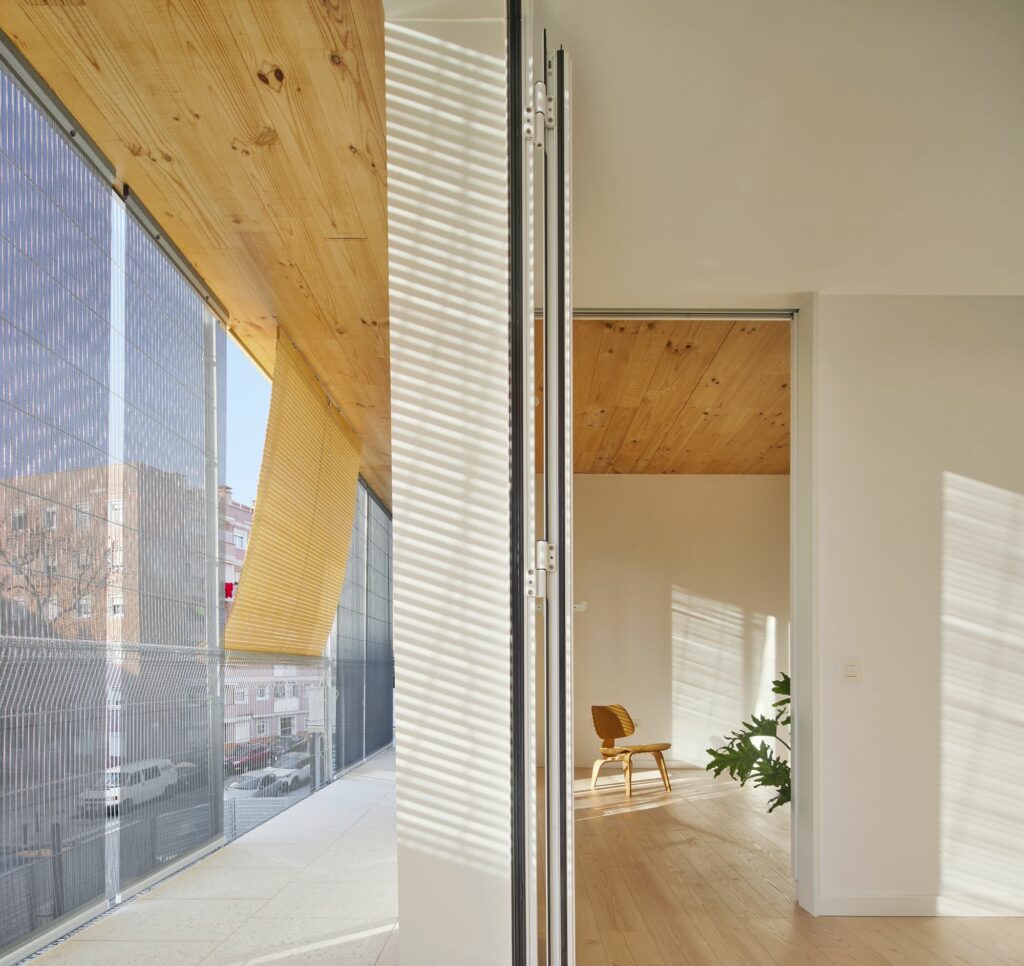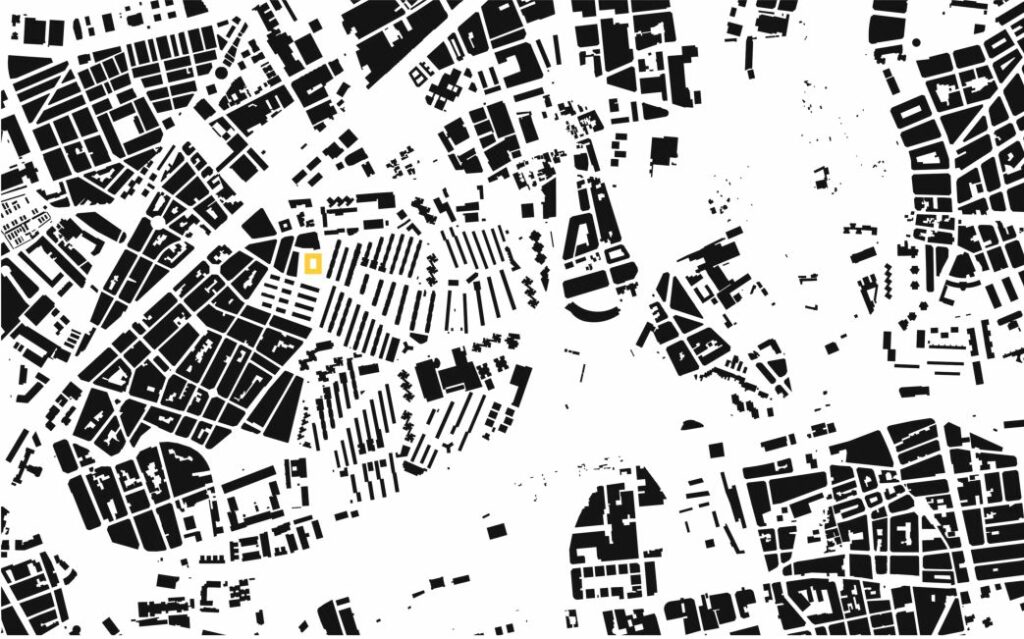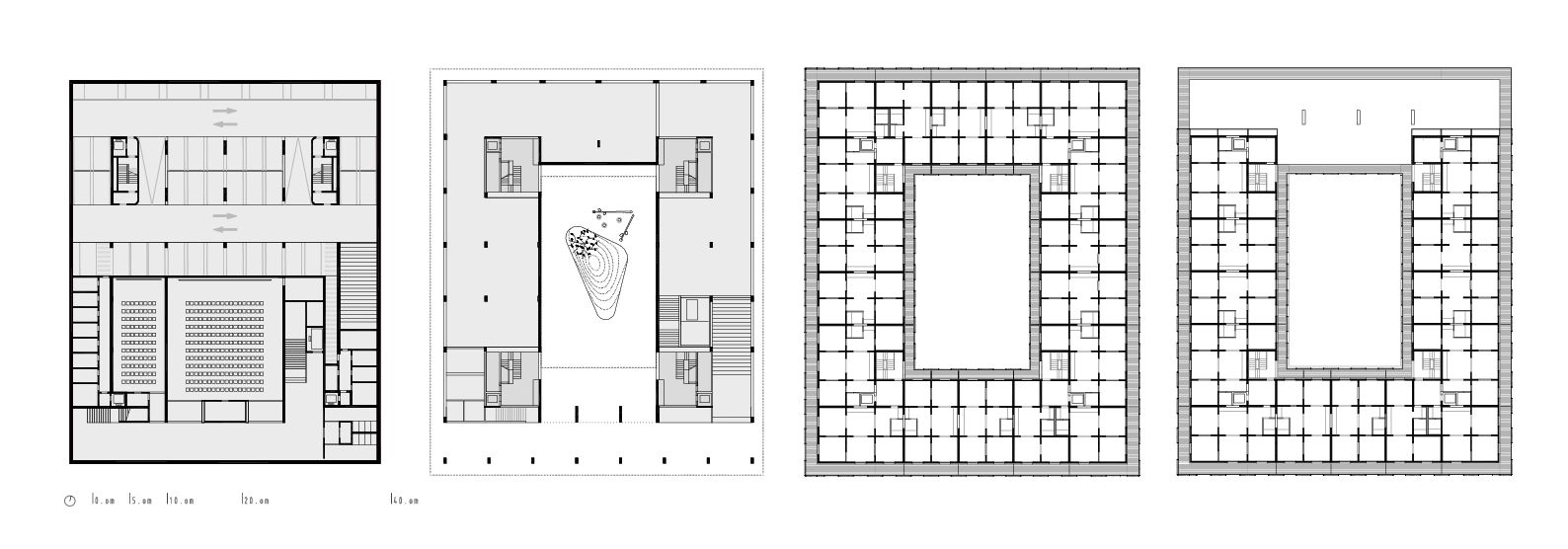The residential building in Cornellà de Llobregat (Barcelona) is for now the largest building in Spain with a Wooden Structure. It houses 85 dwellings on five floors and used a total of 8,300 m2 of 0km wood1 from the forests of the Basque Country.
Text: José Manuel Toral, Maria Peris
Photo: José Hevia
The main features of this new social housing building are the matrix of communicating rooms, which eliminates corridors to ensure maximum use of the floor plan and the use of wood, which favours the automation, leads to the improvement of construction quality, a significant cut in timelines, as well as a cut in C02 emissions.
In 2017, Barcelona-based Peris+Toral Arquitectes won the idea competition organized by AMB and promoted by the public body IMPSOL to design a a social housing unit on the site formerly occupied by the iconic Pisa cinema in the municipality of Barcelona, in Cornellà de Llobregat. It is a freestanding residential building comprising five wood-framed floors supported by a reinforced concrete structure on the ground floor that accommodates shops and public facilities.
As the key points in their design strategy for this multifamily construction, Peris+Toral Arquitectes decided firstly to create a layout of spaces that makes the most of the floor plan by eliminating both private and communal passages and proposing communicating rooms. “We have worked with wood because of the possibilities it offers to automatize the structure of the building and to improve both the construction quality and the times of execution. We were also particularly keen on reducing CO2 emissions and we achieved it with by using a completely sustainable material.” explains José Manuel Toral, lead architect and co-founder of Peris-Toral Arquitectes with Marta Peris. (Cătălina Frâncu)
About the project
The building is organized around a courtyard that links a sequence of intermediate spaces. On the ground floor, a portico open to the city anticipates the doorway and mediates the relationship between public space and the communal courtyard which acts as a small plaza for the community.
Instead of entering each of the building’s hallways directly and independently from the outer façade, the four circulation shafts are located in the four corners of the courtyard, so that all the inhabitants come together and meet in the courtyard-plaza.
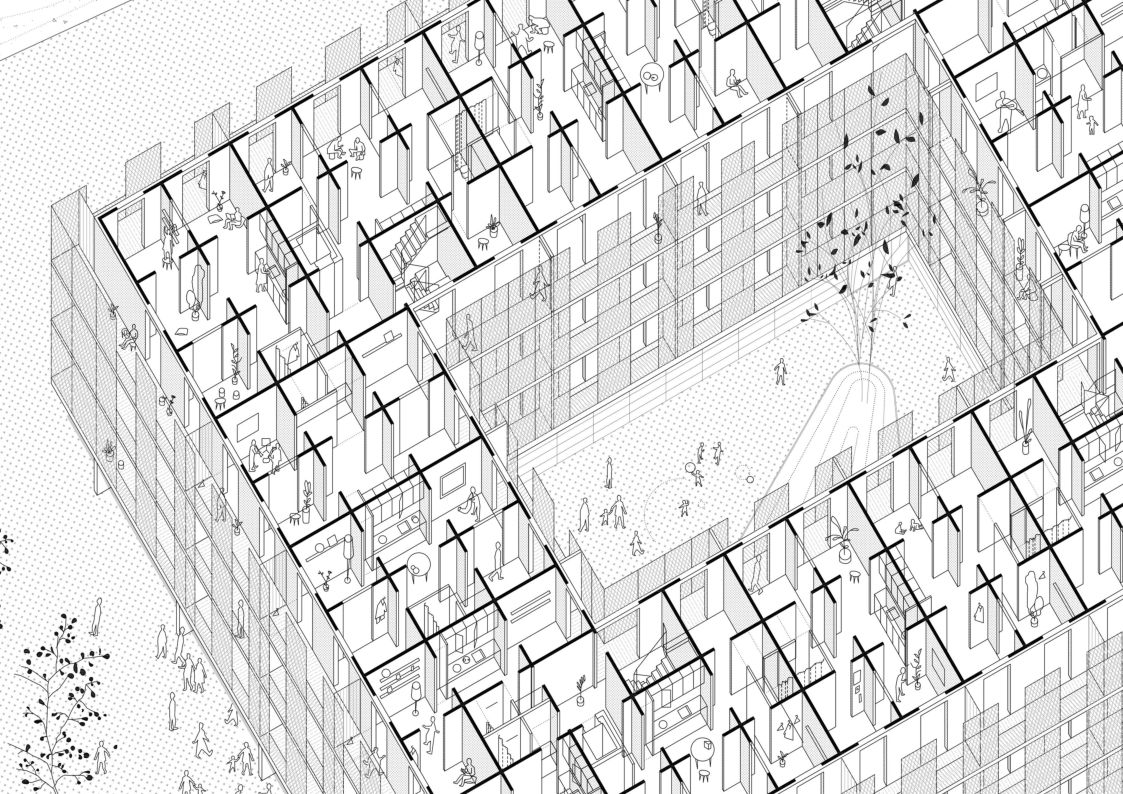 *Axonometry . One courtyard, 543 rooms of similar diemnsions, two rings of intermediate spaces
*Axonometry . One courtyard, 543 rooms of similar diemnsions, two rings of intermediate spaces
On the typical floor, access to the dwellings is via the private terraces that make up the ring of outdoor spaces overlooking the courtyard. The building’s general floor plan is organized by means of a layout of communicating rooms. There are 114 spaces per floor, 543 in the building, of similar dimensions, that eliminate private and communal passageways to make full use of the surface area. The serving spaces are arranged in the central ring while the rest of the rooms, of undifferentiated uses and size, approximate 13 m2, run along the façade, presenting themselves to different forms of occupation. Another terrace in the outer ring completes the spatial sequence, the row of spaces interconnected by large openings, permeable to air, sight and movement.
The 85 dwellings are distributed in four groupings, with a total of 18 units per floor. Four or five homes are laid out around each nucleus, so that all typologies have cross ventilation and dual orientation.
The homes consist of five or six modules, depending on the number of bedrooms (either two or there). The inclusive, open-plan kitchen is located in the central room, acting as a distributor that replaces passages, while making domestic work visible and avoiding fixed gender roles.
The size of the rooms, in addition to offering flexibility based on ambiguity of use and functional indeterminacy, allows an optimal structural space for the wooden structure. As this is social housing, to ensure economic viability the volume of wood required has been optimized to 0.24 m3 per square metre of built area.
*From the left to the right: Basement plan, 1st floor plan, Average floor plan, Last level plan
Info & credits
The project was one of the finalists of EU Prize for Contemporary Architecture – Mies van der Rohe Award 2022.
Total built area: 12.815,55 m2
Budget: 860 €/m2
Client: IMPSOL, – lnstitutoMetropolitano de Promociónde Suelo
Authors: Marta Peris, José Manuel Toral
Guillem Pascual, Ana Espinosa, Maria Megias, Izaskun González, Miguel Bernat, Cristina Porta
Structure: Bernúz Fernández
Fluids: L3J Tècnics Associats
Works Management: Joan March i Raurell
Environmental advising:Societat Orgànica
Acoustics: Àurea Acústica
Landscape: AB Pasatgistes
The total floor area is 10,000 m2.

